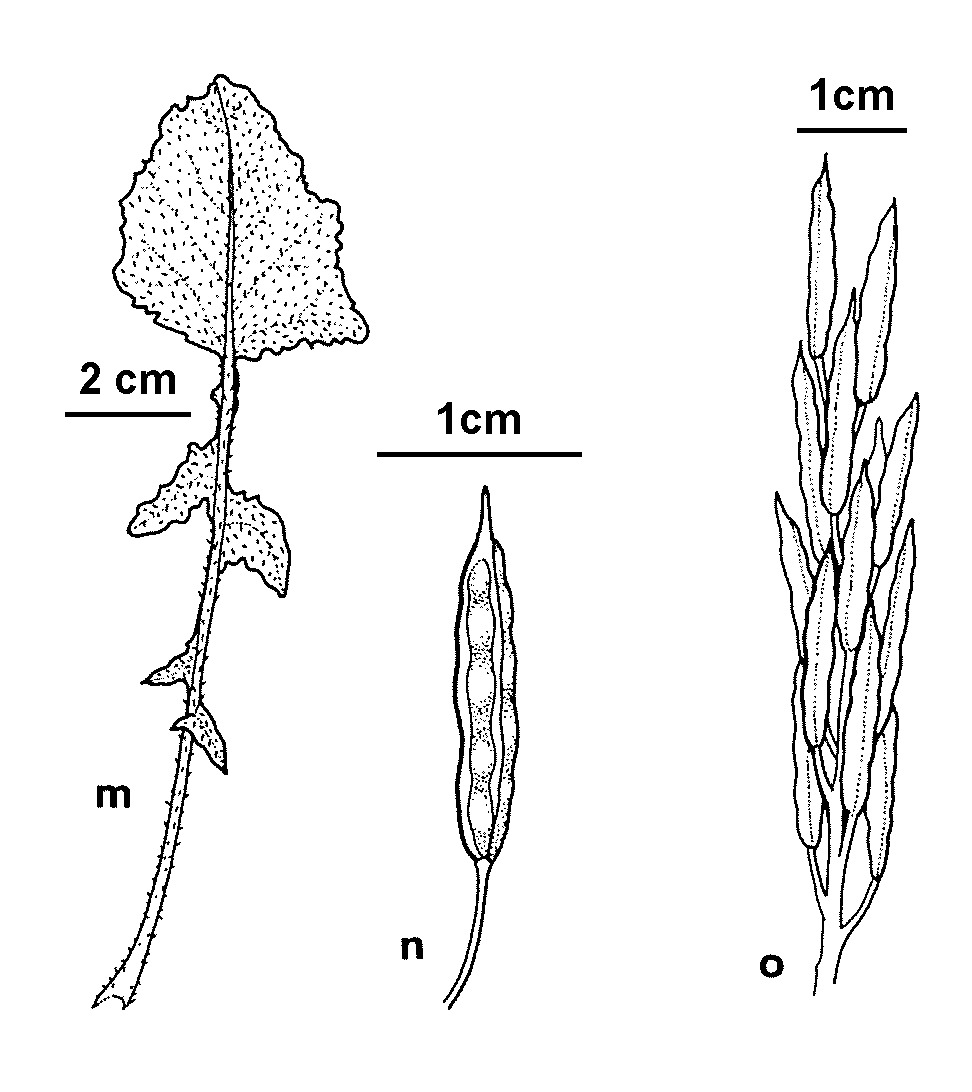Brassica nigra
(L.) W.Koch Black MustardAnnual. Taproot slender. Stems erect, to 1 m high, herbaceous, branched, thin, usually with a bluish spot in axil, bristly at base to glabrous above. Leaves petiolate; basal leaves with 1–3 pairs of irregularly-toothed lateral lobes, bristly on both sides; upper leaves lanceolate, entire, glabrous, often glaucous. Inflorescence crowded. Sepals inclined, 4–5 mm long; petals 7–9 mm long, bright yellow; stamens erect; ovary sessile. Fruit erect-appressed, 1–2 cm long (including beak), 1–2 mm wide, quadrangular; valves slightly constricted between seeds, midrib prominent; beak 1–3 mm long, seedless; pedicel 3–8 mm long; seeds c. 2 mm wide, dark red-brown.
MuM, VVP, VRiv, GipP, Gold, Strz. WA, SA, Qld, NSW, Tas. Native to Europe. Flowers Nov.-Jan.
In the past, the seeds were used in mustard (Brassica ×juncea and Sinapis alba are now used) and as a source of oil for soap and medicine.
Entwisle, T.J. (1996). Brassicaceae. In: Walsh, N.G.; Entwisle, T.J., Flora of Victoria Vol. 3, Dicotyledons Winteraceae to Myrtaceae, pp. 399–459. Inkata Press, Melbourne.
 Spinning
Spinning




